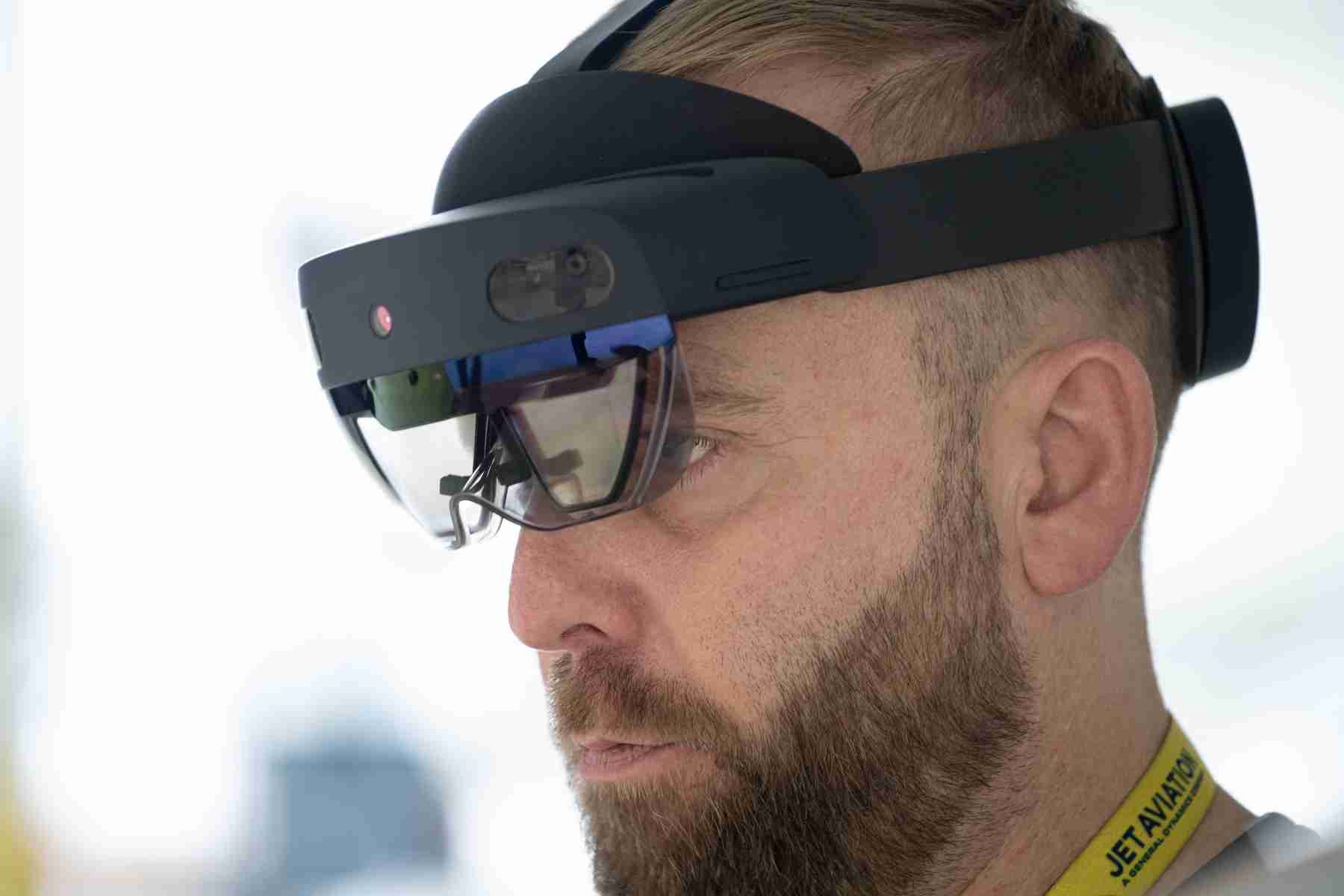Augmented Reality Tool Boosts Collaboration and Efficiency

Since the XR Working group, part of our Innovation Steering Committee, introduced the use of Augmented Reality (AR) in completions projects two years ago in Basel, the applications of this groundbreaking technology at Jet Aviation have grown continuously.
The tool utilized in Basel is the Microsoft HoloLens 2, a set of AR goggles that allows the wearer to share and interact with their surroundings virtually.
“While virtual reality (VR) replaces your vision, augmented reality adds to it by displaying additional information in your field of view. As input methods, the HoloLens can use voice commands, gaze, and hand gestures,” explains Thierry Rietsch, Product Owner Interior.
“The HoloLens operates on a special Microsoft platform with MS Teams integrated. A user can anchor virtual notes or instructions directly within the physical environment. This makes it much more efficient to share visual information that would have to be photographed, uploaded, and emailed otherwise,” Thierry adds.
The Engineering and Installation teams in Basel are finding new ways to use the HoloLens in their work every day. When technicians find an issue in the aircraft, they can directly connect to an engineer to identify the concern, sharing their augmented view. The engineer can then quickly share live 3D data, documents, drawings, or images, and even enable live drafting without having to leave their desk and go to the hangar in person. They can also invite a third party to the call for consultation.
“Evolving from the technology’s original use case of interacting with completions customers, to increased efficiency of collaboration between the Engineering and Installation teams, there are many more HoloLens applications imaginable in the future, such as MRO and AOG scenarios.”
“It is fantastic to have this groundbreaking technology directly available to the installation teams on the hanger floor,” says Mike Green, Senior Aircraft Projects Operation Manager P145. “The HoloLens has the potential to reduce errors and reaction times by giving direct visual and audio access to information, and to get the support of departments exactly when we need it.”
“The time savings and the reduced risk of errors through this collaboration is significant,” Mike sums up additional benefits of the technology. “Using the HoloLens, we can contact an engineer wherever they may be. Whether they’re at their desk, in their home office, or off site at a satellite location, we can share the issue at hand and work on a solution together in real time. All interactions can be recorded for documentation, massively reducing the risk of miscommunication.”
“And we didn’t stop with the technology, in tandem we have developed a new bespoke streamlined process that supports faster turn times," Mike adds.
Going forward, every completion project in Basel will have their own HoloLens available for use.
“Evolving from the technology’s original use case of interacting with completions customers, to increased efficiency of collaboration between our Engineering and Installation teams, there are many more HoloLens applications imaginable in the future, such as MRO and AOG scenarios,” says Mike.
“This is just the beginning,” Thierry agrees.